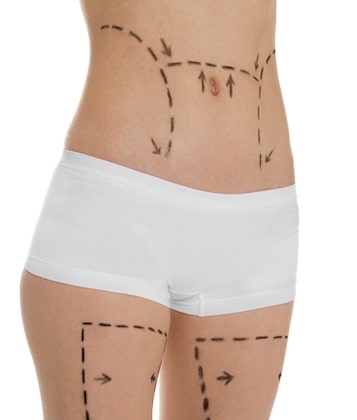When a person has trouble removing excess fat from the body through regular diet and exercise, they often turn to liposuction to remove the targeted fat that is located on the body. This cosmetic procedure, also known as lipo, breaks apart fat in the body and removes it through the use of a cannula. Liposuction is often performed on areas of the body as varied as the thighs, abdomen, chin, arms, and back. There are certain aspects about liposuction that you should know about before making the decision to have the surgery.
 The fat on the body that is targeted for removal is removed through an instrument known as a cannula. The instrument is inserted under the skin of the patient and the fat is removed through the cannula using a high-pressure vacuum.
The fat on the body that is targeted for removal is removed through an instrument known as a cannula. The instrument is inserted under the skin of the patient and the fat is removed through the cannula using a high-pressure vacuum.
The patient is given anesthesia to keep them comfortable during the surgery. It is important to know that liposuction is not to be performed as a method of weight loss. Instead, it can get rid of hard to remove fat and provide the targeted area with a better contour.
The fat cells that are removed by the surgeon are permanently eliminated from the body. There is still a chance that other fat cells on the body will continue to grow and/or remain on the body and you might need to have them removed during an additional lipo surgery in the future.
You should know that there are some risks involved with surgery and they include scarring, infection, numbness, and contour irregularities, In addition, if the surgeon removes too much fat from the targeted area, the skin might gain a lumpy or dented look.
Ideal patients for liposuction normally have a stable body weight and they want to remove deposits of body fat in specific sections of the body. Liposuction is not able to remove stretch marks or cellulite from the body.
Liposuction often works best on patients who have a good amount of skin elasticity so the skin can easily gain a new contour. You should also have a good tone to the skin. If you do not have a good amount of skin elasticity, you might end up with skin that has a loose look where the surgery was performed.
While lipo is normally performed for cosmetic purposes that give the skin an improved aesthetic appearance, there are some conditions that can be treated by the procedure:
Once the liposuction surgery is completed, you might have to spend the night in the hospital depending on the extent of the procedure and the type of anesthetic you were given by the doctor. You will need to wear support bandages that are fitted for the treated area for an amount of time determined by the doctor. Any pain that is felt as you start to recover can be treated with pain medication prescribed by the doctor. The stitches that are placed in the body by the doctor will be removed during a follow-up appointment where the doctor monitors your progress.
The amount of bruising and numbness you feel can last for multiple weeks but these conditions will resolve on their own.
Your results will likely not be visible for one month to several months as you wait for the inflammation to go down. Once the swelling goes down, you will be able to see the changes made to the body and the appearance of an improved shape and contour to the area. The fat that was removed will not return so liposuction will provide permanent results.
You need to schedule a consultation appointment with a surgeon to discuss the pros and cons of the surgery and to also determine if you are an ideal patient for the treatment. You can also ask any questions you have about liposuction during the consultation appointment in order to make sure you completely understand what is involved in the procedure. It is important for you to be educated and aware of the risks and benefits of liposuction before you make the final decision to undergo the surgery so don’t be afraid to ask as many questions as you desire during your meeting with the surgeon.